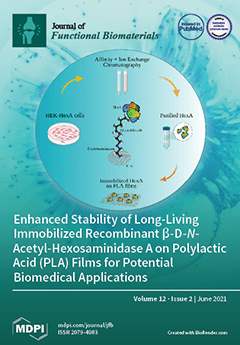Background: The study aimed at assessing the mucoadhesive properties and the barrier effect of a formulation, labelled as AL2106, containing sodium chondroitin sulfate (ChS), xyloglucan from tamarind seed extract, and glycerol, by evaluating the capacity to adhere to a layer of mucin,
[...] Read more.
Background: The study aimed at assessing the mucoadhesive properties and the barrier effect of a formulation, labelled as AL2106, containing sodium chondroitin sulfate (ChS), xyloglucan from tamarind seed extract, and glycerol, by evaluating the capacity to adhere to a layer of mucin, the rheological synergism and the barrier effect in comparison to the marketed Esoxx One medical device. AL2106 is a medical device distributed by Alfasigma SpA, Italy with REF FTP57 (Manufacturer: Labomar SpA); it is analogous to Esoxx One medical device: the two products are drinkable solutions that, after swallowing, adhere to the esophageal mucosa, protecting it from the corrosive effect of the gastric acid reflux. AL2106 has been conceived to be better performing in terms of duration of the barrier effect compared to Esoxx One.
Methods: The mucoadhesive properties, rheological behavior, buffering capacity against acidity, and film-forming ability with the resultant protecting effect on esophagus mucosa (caffeine permeation test) was compared between the two products.
Results: The mucoadhesivity of the formulations was shown in vitro: both remained adherent to a mucin layer, also when the support was rotated by 90°, and when the film layer was washed with water, intended to simulate the washout due to swallowing. AL2106 showed a good buffering efficacy, being able to absorb at least 50% of its weight of 0.03 M HCl while maintaining the pH above 4. The film-forming effect and barrier properties of AL2106 and Esoxx One were confirmed by an in vitro study on reconstructed human esophageal epithelium. A greater film-forming efficacy of AL2106, lasting for at least 5 h, than Esoxx One was observed. Noteworthy, the barrier function of esophageal tissues was shown to be preserved after the application of both formulations.
Conclusions: The combination of ChS with the mucoadhesive glycerol−xyloglucan complex and other excipients, which contribute to the barrier effect and to mucoadhesion, contained in AL2106, allowed a longer-lasting protective effect than Esoxx One, proving its effectivity and safety for oral use.
Full article






